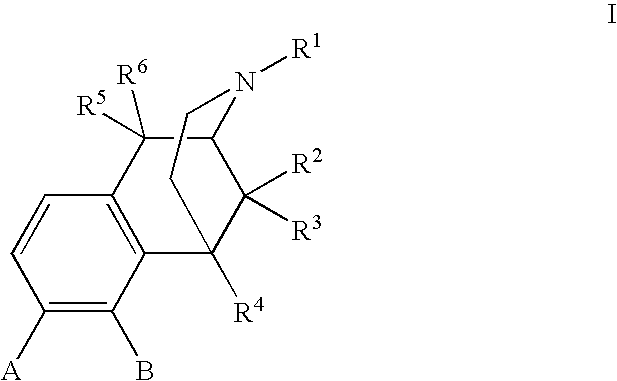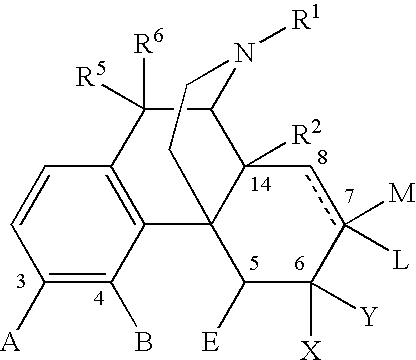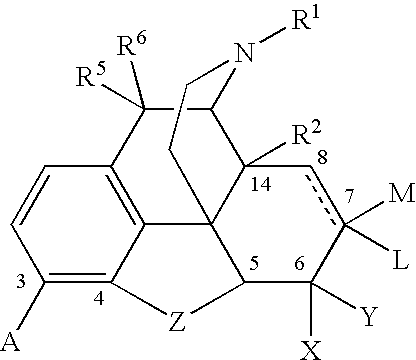Methods of Treating alcoholism and alcohol related disorders using combination drug therapy and swellable polymers
a technology of combination drug therapy and alcohol related disorders, applied in the direction of biocide, drug composition, peptide/protein ingredients, etc., can solve problems such as synergistic or additive effects, and achieve the effect of increasing patient complian
- Summary
- Abstract
- Description
- Claims
- Application Information
AI Technical Summary
Benefits of technology
Problems solved by technology
Method used
Image
Examples
example 1
[0073]This example illustrates the use of a continued, controlled release oral drug dosage form for releasing baclofen into the stomach, duodenum and upper small intestine of a patient at a proper rate for therapeutic effectiveness following once or twice daily administration.
[0074]A controlled release oral drug dosage form as described herein has the potential to provide controlled and prolonged release of baclofen, which reduces the frequency of dosing and a potentially reduces risk of adverse side effects. The continued, controlled release oral dosing form utilizes standard-sized tablets to be retained in the stomach for 4 or more hours after administration (allowing delivery of drug at the desired rate and at the desired time), thereby extending the time of drug delivery to the GI tract. The oral tablet contains solid particles of baclofen dispersed within a polymer. Once in contact with gastric fluid in the stomach, the tablet swells to promote gastric retention. The tablet gra...
example 2
[0076]This example demonstrates that naltrexone does not significantly alter the release characteristics of the controlled release-baclofen formulation (EXAMPLE 1).
[0077]In this example, a pharmacokinetic study involving the coadministration of oral naltrexone (0.5 to 100 mg / kg) as a tablet or capsule and the controlled release-baclofen tablet as is described in EXAMPLE 1. Naltrexone is readily absorbed orally and has a relatively long half-life and activity. Thus there is no need to deliver it as an extended-release oral formulation. In this example, the next phase in the development of the oral delivery of these two drugs is to conduct oral pharmacokinetic (PK) studies in six beagle dogs (with multiple time points from 15 minutes to 48 hours) with different doses of naltrexone and the optimum baclofen formulation (as described above), which is incorporated within the polymer tablet to achieve a sustained plasma concentration of baclofen. Plasma levels of baclofen and naltrexone ar...
example 3
[0078]This example illustrates the use of a controlled gastric retentive form of baclofen with a rapid release coating formulation of naltrexone composing a single oral tablet in which the two drugs are released at a proper rate for therapeutic effectiveness following once or twice daily administration.
[0079]In this example, the outside layer of the controlled release-baclofen swellable polymer tablet is coated with an exact amount of naltrexone. Once swallowed, the naltrexone coating rapidly dissolves and releases naltrexone within the stomach and the controlled release polymer tablet containing baclofen would subsequently swell and gradually release baclofen over 4 or more hours. In this example, an oral PK study using beagle dogs is used to determine the PK plasma profile of both baclofen and naltrexone with each of the drug formulations tested. Plasma levels of baclofen and naltrexone are determined using LCMS.
PUM
 Login to View More
Login to View More Abstract
Description
Claims
Application Information
 Login to View More
Login to View More - R&D
- Intellectual Property
- Life Sciences
- Materials
- Tech Scout
- Unparalleled Data Quality
- Higher Quality Content
- 60% Fewer Hallucinations
Browse by: Latest US Patents, China's latest patents, Technical Efficacy Thesaurus, Application Domain, Technology Topic, Popular Technical Reports.
© 2025 PatSnap. All rights reserved.Legal|Privacy policy|Modern Slavery Act Transparency Statement|Sitemap|About US| Contact US: help@patsnap.com



